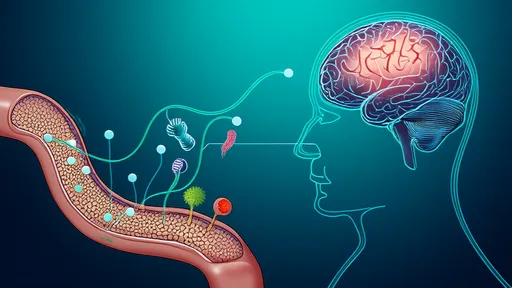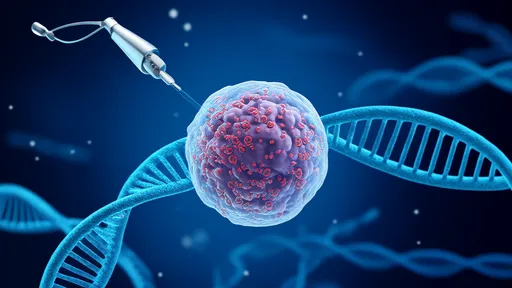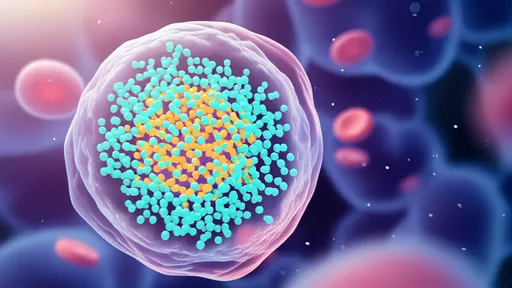The ticking of our biological clock has long been considered an irreversible countdown, but emerging research in epigenetics is challenging this fundamental assumption. Scientists are now decoding the intricate patterns of DNA methylation – chemical tags that accumulate on our genome over time – to develop precise "epigenetic clocks" that measure biological age. These molecular timekeepers don't just track the passage of years; they're revealing pathways to potentially wind back the hands of time.
At the forefront of this revolution lies a startling discovery: biological age isn't locked in synchrony with chronological age. Twin studies have shown epigenetic age differences of up to twenty years between genetically identical individuals, proving that lifestyle and environment write their own story on our DNA. The implications are profound – if we can read these epigenetic signatures, we might learn to rewrite them.
Horvath's clock, developed by UCLA geneticist Steve Horvath in 2013, remains the gold standard among epigenetic aging measures. By analyzing methylation patterns at 353 specific CpG sites across the genome, this multivariate algorithm can predict tissue age with remarkable accuracy, whether examining blood, brain, or even tooth samples. What makes this particularly groundbreaking is its consistency across different cell types – suggesting a universal aging mechanism waiting to be deciphered.
The scientific community has since developed more specialized clocks. Levine's PhenoAge correlates methylation patterns with physiological decline, while GrimAge focuses on mortality risk prediction. These tools aren't just academic curiosities; they're becoming essential in clinical trials for anti-aging interventions. When experimental treatments like senolytics or plasma exchange demonstrate epigenetic age reversal in human trials, the results send shockwaves through medical research circles.
Recent breakthroughs suggest DNA methylation changes might not merely mark aging processes but actively drive them. Researchers at the Salk Institute demonstrated that induced changes to methylation patterns could extend lifespan in mice by reprogramming cells to a more youthful epigenetic state. This challenges the long-held view that epigenetic changes are simply downstream effects of aging rather than potential control points.
The Yamanaka factors – four transcription proteins capable of reverting cells to pluripotent stem cells – have emerged as unexpected allies in age reversal research. Partial reprogramming approaches now aim to reset epigenetic clocks without erasing cellular identity, walking the fine line between rejuvenation and cancerous transformation. Early-stage companies like Altos Labs and Life Biosciences are betting millions that controlled epigenetic reprogramming could become medicine's next frontier.
Nutritional interventions are showing surprising epigenetic effects. Compounds like nicotinamide mononucleotide (NMN) and alpha-ketoglutarate appear to modulate DNA methylation patterns in ways that mimic calorie restriction – the gold standard for lifespan extension in mammals. The Mediterranean diet, rich in polyphenols from olive oil and berries, demonstrates measurable epigenetic benefits that may explain its well-documented anti-aging effects.
Exercise induces immediate epigenetic changes that accumulate into systemic anti-aging effects. HIIT training has been shown to alter methylation patterns in genes related to mitochondrial function and inflammation – changes detectable within hours of a single workout. These findings transform our understanding of physical activity from merely slowing decline to actively rewriting our biological code.
The environmental dimension of epigenetic aging is coming into sharp focus. Studies of Holocaust survivors reveal traumatic stress can leave permanent methylation scars that accelerate biological aging. Conversely, mindfulness practices and positive social connections demonstrate protective epigenetic effects, suggesting our relationships and mental states chemically inscribe themselves into our cellular aging process.
Commercial epigenetic testing services now offer consumers glimpses at their biological age, but the field faces growing pains. Discrepancies between different clock algorithms and questions about what exactly constitutes "age reversal" have led to calls for standardization. The FDA has yet to approve any epigenetic age test for medical use, leaving direct-to-consumer services in a regulatory gray area.
Ethical dilemmas loom as the science progresses. Would epigenetic rejuvenation become a privilege of the wealthy? How would pension systems adapt if biological age replaces chronological age as the metric of retirement? These questions underscore that epigenetic clock research doesn't just challenge biological dogma – it may force us to reconsider fundamental social contracts built around the assumption of linear, irreversible aging.
The most exciting prospect lies in combining epigenetic interventions. Early evidence suggests synergistic effects when pairing reprogramming factors with senolytics, mTOR inhibitors, and metabolic optimizers. This multimodal approach mirrors cancer treatment evolution from single drugs to combination therapies, hinting that age reversal might require similarly sophisticated cocktails.
As research accelerates, the dream of comprehensive epigenetic age intervention inches toward reality. The coming decade will likely see the first FDA-approved treatments targeting biological age as a modifiable condition rather than an immutable fact of life. What began as a way to measure aging may ultimately provide the tools to master it – rewriting not just our cells, but perhaps the human story itself.

By /Jul 2, 2025

By /Jul 2, 2025

By /Jul 2, 2025

By /Jul 2, 2025

By /Jul 2, 2025

By /Jul 2, 2025

By /Jul 2, 2025

By /Jul 2, 2025

By /Jul 2, 2025

By /Jul 2, 2025

By /Jul 2, 2025

By /Jul 2, 2025

By /Jul 2, 2025

By /Jul 2, 2025

By /Jul 2, 2025

By /Jul 2, 2025

By /Jul 2, 2025

By /Jul 2, 2025

By /Jul 2, 2025

By /Jul 2, 2025